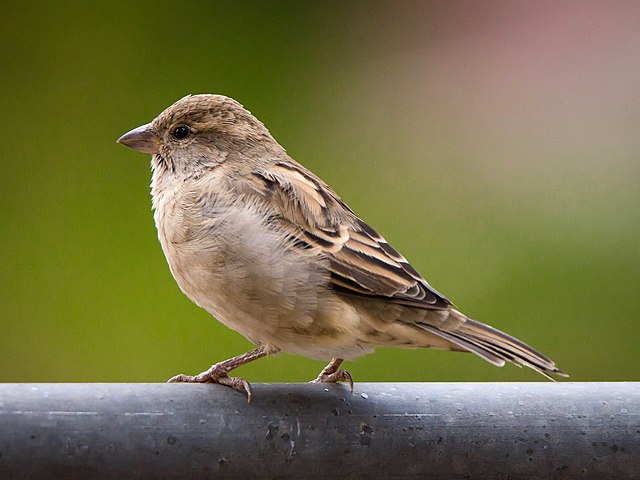图像分类是机器学习的一种常见用途,用于识别图像所代表的内容。例如,我们可能想知道一张给定的图片中出现了哪种类型的动物。预测图像所代表内容的任务称为图像分类。图像分类器经过训练,可以识别各种类别的图像。例如,可以训练一个模型来识别代表三种不同类型动物的照片:兔子、仓鼠和狗。请参阅图像分类概述,了解有关图像分类器的详细信息。
使用 Task Library ImageClassifier API 可将自定义图像分类器或预训练图像分类器部署到您的模型应用中。
ImageClassifier API 的主要功能
输入图像处理,包括旋转、调整大小和色彩空间转换。
输入图像的感兴趣区域。
标注映射区域。
筛选结果的得分阈值。
Top-k 分类结果。
标注允许列表和拒绝列表。
支持的图像分类器模型
以下模型保证可与 ImageClassifier API 兼容。
由 AutoML Vision Edge 图像分类创建的模型。
符合模型兼容性要求的自定义模型。
用 Java 运行推断
请参阅图像分类参考应用,获得如何在 Android 应用中使用 ImageClassifier 的示例。
步骤 1:导入 Gradle 依赖项和其他设置
将 .tflite 模型文件复制到将要运行模型的 Android 模块的资源目录下。指定不压缩该文件,并将 TensorFlow Lite 库添加到模块的 build.gradle 文件中。
android {
// Other settings
// Specify tflite file should not be compressed for the app apk
aaptOptions {
noCompress "tflite"
}
}
dependencies {
// Other dependencies
// Import the Task Vision Library dependency (NNAPI is included)
implementation 'org.tensorflow:tensorflow-lite-task-vision'
// Import the GPU delegate plugin Library for GPU inference
implementation 'org.tensorflow:tensorflow-lite-gpu-delegate-plugin'
}
步骤 2:使用模型
// Initialization
ImageClassifierOptions options =
ImageClassifierOptions.builder()
.setBaseOptions(BaseOptions.builder().useGpu().build())
.setMaxResults(1)
.build();
ImageClassifier imageClassifier =
ImageClassifier.createFromFileAndOptions(
context, modelFile, options);
// Run inference
List<Classifications> results = imageClassifier.classify(image);
有关配置 ImageClassifier 的更多选项,请参阅源代码和 Javadoc。
在 iOS 中运行推断
第 1 步:安装依赖项
Task Library 支持使用 CocoaPods 进行安装。请确保您的系统上已安装 CocoaPods。有关说明,请参阅 CocoaPods 安装指南。
有关向 Xcode 项目添加 Pod 的详细信息,请参阅 CocoaPods 指南。
在 Podfile 中添加 TensorFlowLiteTaskVision。
target 'MyAppWithTaskAPI' do
use_frameworks!
pod 'TensorFlowLiteTaskVision'
end
请确保您的应用捆绑包中存在用于推断的 .tflite 模型。
第 2 步:使用模型
Swift
// Imports
import TensorFlowLiteTaskVision
// Initialization
guard let modelPath = Bundle.main.path(forResource: "birds_V1",
ofType: "tflite") else { return }
let options = ImageClassifierOptions(modelPath: modelPath)
// Configure any additional options:
// options.classificationOptions.maxResults = 3
let classifier = try ImageClassifier.classifier(options: options)
// Convert the input image to MLImage.
// There are other sources for MLImage. For more details, please see:
// https://developers.google.com/ml-kit/reference/ios/mlimage/api/reference/Classes/GMLImage
guard let image = UIImage (named: "sparrow.jpg"), let mlImage = MLImage(image: image) else { return }
// Run inference
let classificationResults = try classifier.classify(mlImage: mlImage)
Objective C
// Imports
#import <TensorFlowLiteTaskVision/TensorFlowLiteTaskVision.h>
// Initialization
NSString *modelPath = [[NSBundle mainBundle] pathForResource:@"birds_V1" ofType:@"tflite"];
TFLImageClassifierOptions *options =
[[TFLImageClassifierOptions alloc] initWithModelPath:modelPath];
// Configure any additional options:
// options.classificationOptions.maxResults = 3;
TFLImageClassifier *classifier = [TFLImageClassifier imageClassifierWithOptions:options
error:nil];
// Convert the input image to MLImage.
UIImage *image = [UIImage imageNamed:@"sparrow.jpg"];
// There are other sources for GMLImage. For more details, please see:
// https://developers.google.com/ml-kit/reference/ios/mlimage/api/reference/Classes/GMLImage
GMLImage *gmlImage = [[GMLImage alloc] initWithImage:image];
// Run inference
TFLClassificationResult *classificationResult =
[classifier classifyWithGMLImage:gmlImage error:nil];
请参阅源代码,了解有关配置 TFLImageClassifier 的更多选项。
用 Python 运行推断
第 1 步:安装 pip 软件包
pip install tflite-support
第 2 步:使用模型
# Imports
from tflite_support.task import vision
from tflite_support.task import core
from tflite_support.task import processor
# Initialization
base_options = core.BaseOptions(file_name=model_path)
classification_options = processor.ClassificationOptions(max_results=2)
options = vision.ImageClassifierOptions(base_options=base_options, classification_options=classification_options)
classifier = vision.ImageClassifier.create_from_options(options)
# Alternatively, you can create an image classifier in the following manner:
# classifier = vision.ImageClassifier.create_from_file(model_path)
# Run inference
image = vision.TensorImage.create_from_file(image_path)
classification_result = classifier.classify(image)
请参阅源代码,了解有关配置 ImageClassifier 的更多选项。
用 C++ 运行推断
// Initialization
ImageClassifierOptions options;
options.mutable_base_options()->mutable_model_file()->set_file_name(model_path);
std::unique_ptr<ImageClassifier> image_classifier = ImageClassifier::CreateFromOptions(options).value();
// Create input frame_buffer from your inputs, `image_data` and `image_dimension`.
// See more information here: tensorflow_lite_support/cc/task/vision/utils/frame_buffer_common_utils.h
std::unique_ptr<FrameBuffer> frame_buffer = CreateFromRgbRawBuffer(
image_data, image_dimension);
// Run inference
const ClassificationResult result = image_classifier->Classify(*frame_buffer).value();
有关配置 ImageClassifier 的更多选项,请参阅源代码。
结果示例
下面是一个鸟类分类器的分类结果的示例。

Results:
Rank #0:
index : 671
score : 0.91406
class name : /m/01bwb9
display name: Passer domesticus
Rank #1:
index : 670
score : 0.00391
class name : /m/01bwbt
display name: Passer montanus
Rank #2:
index : 495
score : 0.00391
class name : /m/0bwm6m
display name: Passer italiae
用您自己的模型和测试数据试用简单的 ImageClassifier CLI 演示工具。
模型兼容性要求
ImageClassifier API 需要具有强制性 TFLite Model Metadata 的 TFLite 模型。请参阅使用 TensorFlow Lite Metadata Writer API 为图像分类器创建元数据的示例。
兼容的图像分类器模型应满足以下要求:
输入图像张量 (kTfLiteUInt8/kTfLiteFloat32)
- 图像输入大小为
[batch x height x width x channels]。 - 不支持批量推断(
batch必须为 1)。 - 仅支持 RGB 输入(
channels必须为 3)。 - 如果类型为 kTfLiteFloat32,则必须将 NormalizationOptions 附加到元数据以进行输入归一化。
- 图像输入大小为
输出分数张量 (kTfLiteUInt8/kTfLiteFloat32)
- 具有
N个类和 2 或 4 个维度,即[1 x N]或[1 x 1 x 1 x N] - 可选(但推荐)标签映射可作为 AssociatedFile-s,类型为 TENSOR_AXIS_LABELS,每行包含一个标签。请参阅示例标签文件。第一个此类 AssociatedFile(如果有)用于填充结果的
label字段(在 C++ 中命名为class_name)。display_name字段由其区域与创建时所用的ImageClassifierOptions的display_names_locale字段(默认为“en”,即英语)相匹配的 AssociatedFile(如果有)填充。如果上述选项均不可用,将仅填充结果中的index字段。
- 具有
